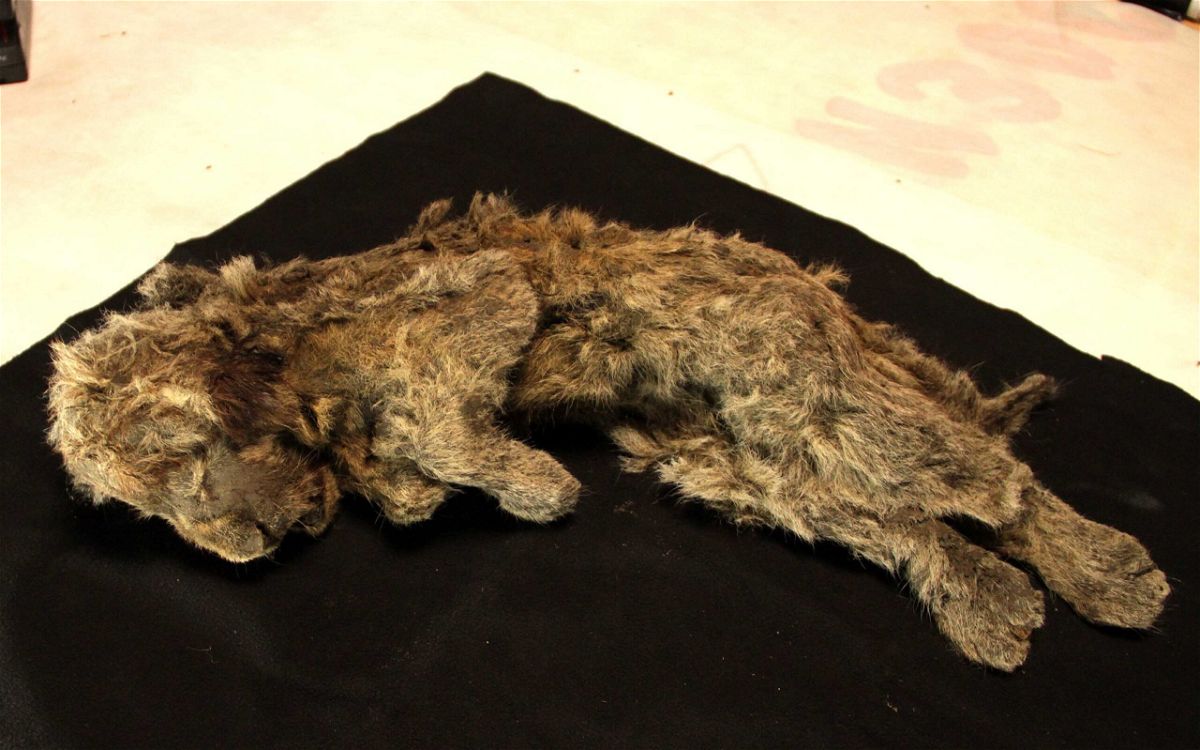28,000-year-old lion cub looks like it’s just sleeping

A frozen cave lion cub found in Siberia with whiskers still intact is more than 28
By Ashley Strickland, CNN
We are driven by discovery.
As a kid, I devoured stories about the arduous efforts to reveal the past (and I still do).
There were divers seeking shipwrecks, astronomers peering through telescopes at the universe, researchers digging for fossils, and historians looking through pages and paintings to find lost masterpieces.
Their findings were enthralling, but the experiences of these explorers — the journeys to reach their breakthroughs — were equally insightful. Reading their words, I could feel the salt air on my face, the sun on my back, the dust on my hands — and the weight of what it took to gain this knowledge.
As we enjoy the endlessly fascinating bounty shared by researchers, may we always honor how it became possible.
Unearthed
This is Sparta, and apart from some fur, the cub appears to be taking a cat nap. But the cave lion cub closed her eyes for the final time 28,000 years ago.
She, along with another cave lion cub, were discovered frozen in the Siberian Arctic. Their teeth, skin, soft tissue and organs are mummified. Even Sparta’s claws are sharp enough to pose a risk to the scientists studying her.
These incredibly well-preserved remains will allow researchers to study the cubs’ DNA, revealing more about the unique features of extinct cave lions.
Meanwhile, more research has concluded that Neanderthals, our Stone Age cousins who were contemporaries of cave lions, were painting in caves long before modern humans.
Other worlds
A year after launching on the journey to Mars, the Perseverance rover attempted to collect its first sample of the red planet this week. But things didn’t go according to plan.
While the rover was able to drill into a rock, the data showed there was nothing inside the sample tube — something that never happened when the sampling system was tested on Earth.
The rover’s teams are sorting through the data to figure out what went wrong and will schedule another sample collection attempt in the future.
Scientists are eager to collect Martian dirt and rocks because these samples will eventually be returned to Earth by future missions, providing a chance to truly study and understand Mars like never before. It’s just one way that the rover and its helicopter sidekick, Ingenuity, are changing the way we explore the red planet.
Ocean secrets
Earth’s wild blue waters have a way of revealing glimpses into history, including chapters that are full of intrigue and tragedy.
A dive team found archaeological “treasures,” including Greek ceramics and even 2,400-year-old wicker baskets filled with fruit, at the site of an ancient sunken city off Egypt’s coast. And a sinkhole in Lake Huron is allowing researchers to learn how oxygen on early Earth may have been created.
But the most somber search is the one that Black divers are conducting for slave shipwrecks.
Out of the 35,000 ships used to bring over 12 million enslaved Africans across the Atlantic between the 15th and 19th centuries, some 500 to 1,000 of them wrecked. Diving With a Purpose is attempting to bring this painful history to the surface and share those hidden stories.
Mission critical
While drought and wildfires surge in some parts of the globe, deadly flooding has also taken a toll in Germany, the US and China, among other places, this summer. And it’s only going to get worse.
The number of people at risk of experiencing extreme flooding is 10 times higher than expected.
This new research comes ahead of the UN Intergovernmental Panel on Climate Change releasing its major “state of the science” report on Monday. The report is expected to describe how extreme weather will worsen and become more frequent due to human-caused climate change.
Wild kingdom
There must be some misunderstanding. It turns out that giraffes have been keeping their complex social societies, comparable with those of elephants, under wraps.
New research suggests that giraffes have a matrilineal society. Female giraffes are not only closely bonded with their calves, but other female giraffes as well. These findings also suggest that giraffes have “grandmothers,” not unlike the relationships we have with our own human grandmothers.
The more scientists understand giraffe behavior, the better they may be able to ensure that these vulnerable animals survive and thrive.
Curiosities
Come in for a close-up on these:
— These shows are about to explore a bold new frontier: Reality TV is going to space. Who wants to be a millionaire, er, astronaut?
— This rare species was thought to be extinct, but it’s still around — and barely clinging to survival.
— Bucket-list travel favorite Machu Picchu, the Inca citadel in Peru, is a lot older than we thought.
Like what you’ve read? Oh, but there’s more. Sign up here to receive in your inbox the next edition of Wonder Theory, brought to you by CNN Space and Science writer Ashley Strickland, who finds wonder in planets beyond our solar system and discoveries from the ancient world.
The-CNN-Wire
™ & © 2021 Cable News Network, Inc., a WarnerMedia Company. All rights reserved.


